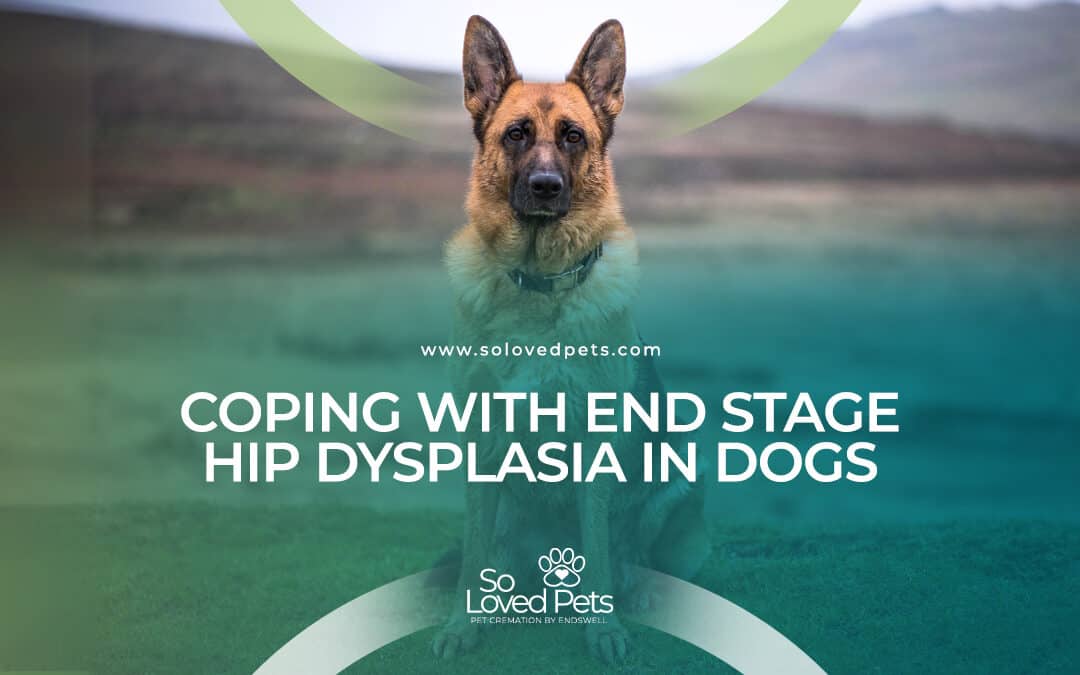When your dog reaches the final stages of hip dysplasia, it can feel overwhelming. You’re not alone in wanting to make them as comfortable as possible while still treasuring the moments you have left together. As you face the challenges of end-stage hip dysplasia in dogs, it’s natural to feel a mixture of sadness, frustration, and love.
But there’s hope in knowing there are ways to help manage their pain and give them the best quality of life.
Let’s walk through how we can support our dogs through this difficult time.
What is Canine Hip Dysplasia? Understanding the Condition
Canine hip dysplasia is a common but serious condition that affects the hip joint in many dogs, especially large and giant breeds.
The hip joint functions as a ball and socket, and when a dog has hip dysplasia, this joint doesn’t develop properly. Instead of moving smoothly, the ball and socket joint grinds, leading to pain, inflammation, and eventually severe joint damage.
Dogs with hip dysplasia can experience joint pain, decreased mobility, and a significant reduction in their quality of life if not treated effectively.
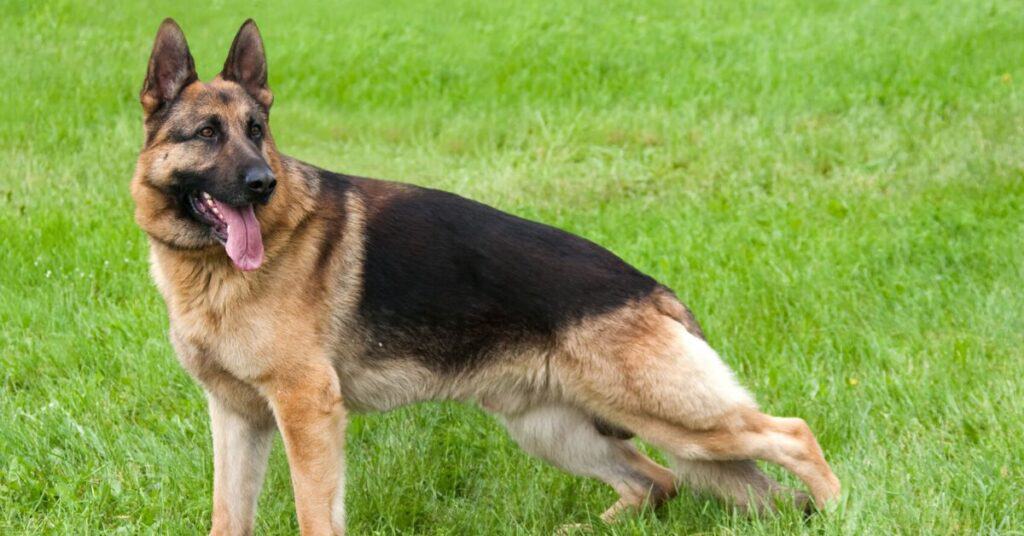
Commonly Affected Breeds
Certain breeds are more prone to developing hip dysplasia, especially large and giant breeds like German Shepherds and Labrador Retrievers. These breeds are often at a higher risk due to their genetic predisposition and rapid growth rates during puppyhood.
However, smaller dogs can also develop hip dysplasia, though it’s less common. Active dogs and those who engage in high-impact activities may also be more susceptible to the condition over time.
Signs and Symptoms of Hip Dysplasia
It can be tough to watch your canine companion struggle with hip dysplasia, but knowing the signs can help you address the issue early on. Common signs of hip dysplasia in dogs include the following:
- A “bunny hopping” gait
- Poor mobility
- Difficulty rising
- A reluctance to engage in activities they once loved
- Muscle atrophy in their hind legs as they avoid putting weight on their hips.
- Slowing down
- Avoiding stairs
- Struggling to jump
Keeping an eye out for these symptoms can help us catch the condition early, improving the dog’s quality of life.
Managing and Treating Canine Hip Dysplasia
There are various ways we can help manage a dog’s hip dysplasia, depending on the severity of the condition. For mild to moderate cases, maintaining a lean body weight and focusing on weight management can reduce stress on the hips.
Joint supplements, such as glucosamine and chondroitin, support joint health and alleviate discomfort by reducing inflammation.
In more severe cases, veterinary medicine may recommend:
- Physical therapy
- Pain medications
- Surgical options like a femoral head ostectomy or total hip replacement to restore joint mobility
These procedures can significantly improve the dog’s life and give them back a more normal quality of life.
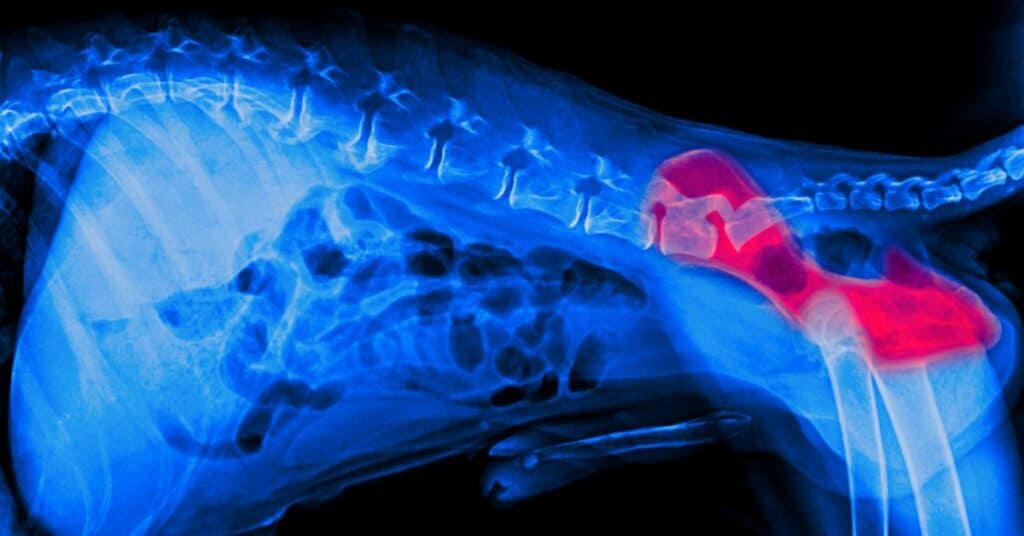
Preventing Hip Dysplasia
While genetics play a role, environmental factors also affect a dog’s chances of developing hip dysplasia.
Key strategies to avoid hip dysplasia include:
- Keeping your dog at an ideal body weight
- Providing regular low-impact exercise
- Supporting joint health through diet and supplements
By taking early action and working closely with your vet, we can help prevent hip dysplasia or slow its progression in your dog’s hips.
Keeping Dogs With Hip Dysplasia Comfortable Through the End-Stages
Providing Comfort in the Final Stages
As hip dysplasia progresses, you need to focus on keeping your canine companion comfortable and ensuring they still enjoy their time with you. By understanding what your dog is going through, you can take steps to manage their pain and improve their quality of life, even as their hip joints become more affected.
Whether through pain management, supportive therapies, or simple adjustments at home, there are ways to ease the discomfort your dog feels in the final stages of this condition.
At So Loved Pets, we understand that you want your pet’s final goodbye to be as gentle as possible, and we’re committed to providing the highest level of care for both you and your pet. If you’re ready to make cremation arrangements or simply want to learn more about our services, please contact us today.
We’re here to help you every step of the way as you honor your beloved companion.
Pain Management Strategies
When your dog reaches the advanced stages of hip dysplasia, pain relief becomes a top priority. Anti-inflammatory medications and other pain management options help reduce swelling in your dog’s hip joints, which leads to less joint pain.
Your vet may recommend joint supplements to support joint health and decrease inflammation around the affected hip joint. While joint supplements alone won’t reverse the damage, they can help alleviate discomfort, especially when combined with pain medications.
Maintaining Mobility and Muscle Strength
Keeping your dog mobile can feel like a challenge, but even light exercise helps maintain muscle strength and slows the progression of muscle atrophy.
Physical therapy is one option you can explore to keep your dog moving comfortably. Low-impact exercises such as swimming or short, gentle walks can improve joint mobility without putting too much strain on your dog’s hips.
Regular movement helps prevent joint stiffness, and your vet may suggest specific routines to support your dog’s condition.

Creating a Comfortable Environment
As your dog’s condition worsens, simple changes at home can make a world of difference.
- Providing soft bedding relieves pressure on your dog’s hip joints and makes it easier for them to rest.
- Reduce their need to climb stairs or jump by providing ramps or keeping them on one floor of the house.
- Maintaining a healthy weight is critical too—carrying extra pounds adds stress to their already compromised joints. Weight management is especially important for large and giant breed dogs that are already prone to hip dysplasia. By controlling their weight, you help relieve joint pain and prolong their mobility.
Exploring Surgical and Medical Options
In some cases, surgical options like a femoral head osteotomy or total hip replacement may be considered, but these are often more appropriate for younger dogs or dogs with moderate hip dysplasia.
For dogs in the end stages, surgery may no longer be feasible. However, ongoing medical management through pain relief and anti-inflammatory medications, combined with physical therapy, can make your dog’s remaining time as comfortable as possible.
While you may not be able to reverse the condition, you can take steps to help your dog live comfortably with hip dysplasia.
Supporting Your Dog’s Final Days
As a pet parent, your goal is to ensure that your dog lives out their final days with dignity and comfort. By working closely with your vet and paying attention to the signs of hip dysplasia, you can make informed decisions about their care.
Whether through medical management, weight control, or home adjustments, you have the tools to keep your dog comfortable as they approach the end stages of hip dysplasia.
Facing Your Dog’s End-Of-Life: When Is it Time to Say Goodbye?
Recognizing the Signs
As your dog ages, especially if they’ve been living with hip dysplasia, there may come a point when you start questioning whether it’s time to say goodbye. Deciding when to make this difficult decision is one of the hardest parts of being a pet parent.
While some dogs with hip dysplasia continue to enjoy a relatively normal life through medical management, others may reach a stage where their quality of life starts to decline.
If your dog can no longer get up without pain or is struggling with basic activities, it may be time to evaluate what’s best for them. Paying attention to clinical signs such as extreme joint pain, the inability to walk, and constant discomfort can help guide this tough decision.
Assessing Quality of Life
One of the key factors in knowing when it’s time to say goodbye is assessing your dog’s quality of life. This can be especially challenging with dogs suffering from advanced hip dysplasia, as their mobility is often severely limited.
If your dog is struggling to move, even with medications or physical therapy, or if they seem to be in pain most of the time, it’s important to consider their comfort. When your dog’s pain becomes more frequent, it’s a sign that their hip joints may be causing more harm than they can tolerate.
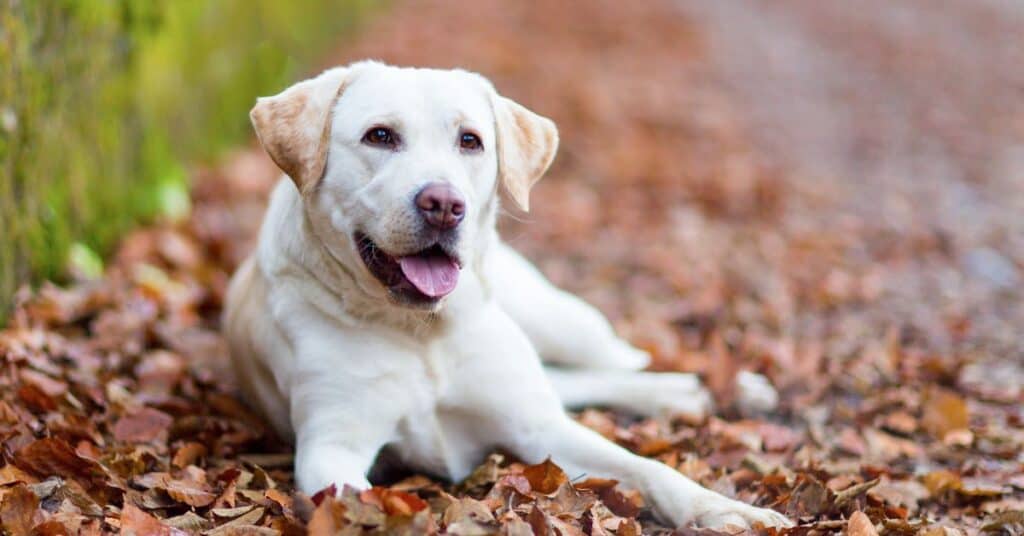
Understanding Pain and Discomfort
Chronic pain is a significant factor when making end-of-life decisions for dogs with hip dysplasia. The hip joint, which should glide smoothly, becomes a source of constant pain as joint cartilage deteriorates and inflammation increases.
If your dog’s condition has reached a point where even basic movement is painful despite pain relief measures, you may need to think about their overall well-being.
You can help manage hip dysplasia in dogs with medications, physical therapy, and other treatments, but once your canine companion can no longer find relief, it’s crucial to address their ongoing discomfort.
Consulting Your Veterinarian
Your veterinarian is an invaluable partner in helping you make this difficult decision. They can assess your dog’s condition, considering factors like the affected hip joint, the dog’s age, and how their dysplasia is progressing.
In some cases, surgeries like triple pelvic osteotomy or total hip replacements are options, particularly for younger dogs or those with moderate hip dysplasia.
However, when your dog reaches the advanced stages, these procedures may no longer be viable. A trusted vet can provide insight into your dog’s current pain levels, joint mobility, and overall prognosis.
Making the Final Decision
As pet parents, our responsibility is to prioritize our dogs’ comfort and quality of life, even when that means making heartbreaking decisions. When your dog can no longer experience the joys of daily life without severe pain, it may be time to consider letting them go.
Saying goodbye is never easy, but knowing you’ve given your dog love, care, and a fulfilling life can offer some comfort in this difficult time. Taking the time to reflect on their current condition, their happiness, and their future can guide you in making the best choice for your canine companion.
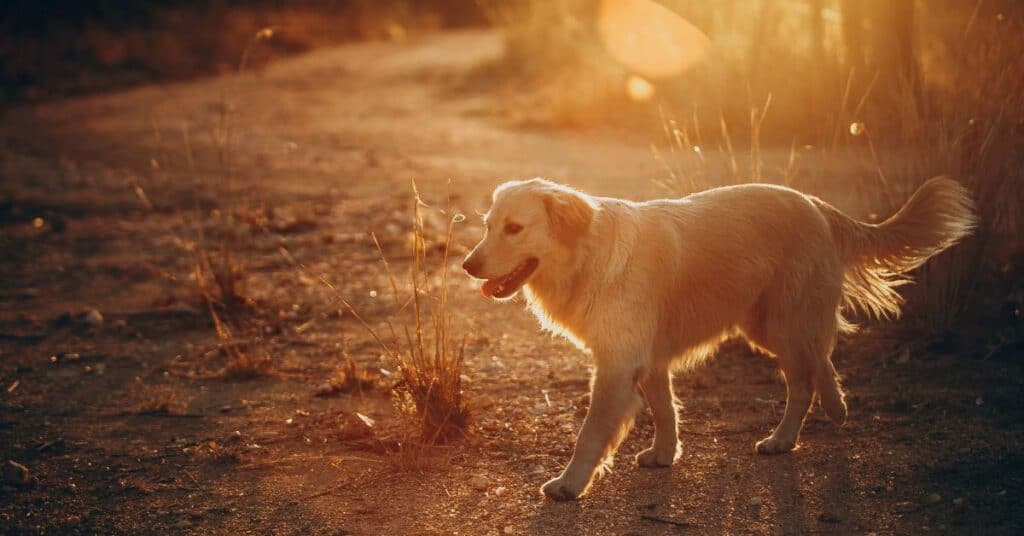
When It’s Time to Let Go
At So Loved Pets, we understand that making the decision to say goodbye to your beloved pet is never easy. We’ve been where you are—holding onto every precious moment, unsure of how to proceed when your pet’s quality of life declines.
When that time comes, you want to make sure their final moments are handled with the utmost care and dignity.
After your beloved dog has crossed the rainbow bridge, our modern and individual pet cremation services provide a compassionate, respectful option for honoring your pet’s life.
Choosing Cremation for Your Pet
Cremation offers you a way to memorialize your pet that fits into your lifestyle and values. Whether you’re looking for a simple way to keep their ashes in a cherished spot at home or you prefer to scatter them in a place that held meaning for both of you, cremation provides flexibility.
At So Loved Pets, our individual cremation services ensure that the remains you receive are only those of your pet, giving you peace of mind during this difficult time.
We know that making these choices can feel overwhelming, but we’re here to guide you through each step.
Why Modern Cremation?
Modern pet cremation is a gentle and environmentally responsible option. Unlike traditional cremation methods, modern cremation reduces environmental impact while still ensuring your pet is treated with care.
Many of us are mindful of the legacy we leave behind, and choosing a cremation method that aligns with eco-conscious values allows you to honor your pet in a way that respects the earth we all share.
Our cremation services also use less energy and emit no pollutants, making it a kinder choice for pet parents who prioritize sustainability.
Memorializing Your Pet
How you choose to remember your pet is deeply personal, and we offer several options to help you find what feels right.
From custom urns to memorial jewelry and garden stones, you can select something that speaks to the unique bond you shared.
Whether it’s a beautifully crafted urn on your mantel or a keepsake you can carry with you, these options allow your pet’s memory to stay close in a way that’s meaningful to you.
Let Us Help You Honor Your Pet
At So Loved Pets, we believe every pet deserves to be remembered with love and respect. Our caring team is here to support you, offering:
- Planning services for memorial services
- A personalized obituary
- Transportation services
- Guidance on choosing memorial products
- Helping you navigate the cremation process
We know how important it is to make this final goodbye as gentle as possible, and we’re committed to providing the highest level of care for both you and your pet.
If you’re ready to make arrangements or simply want to learn more about our services, please contact us today.
We’re here to help you every step of the way as you honor your beloved companion.

